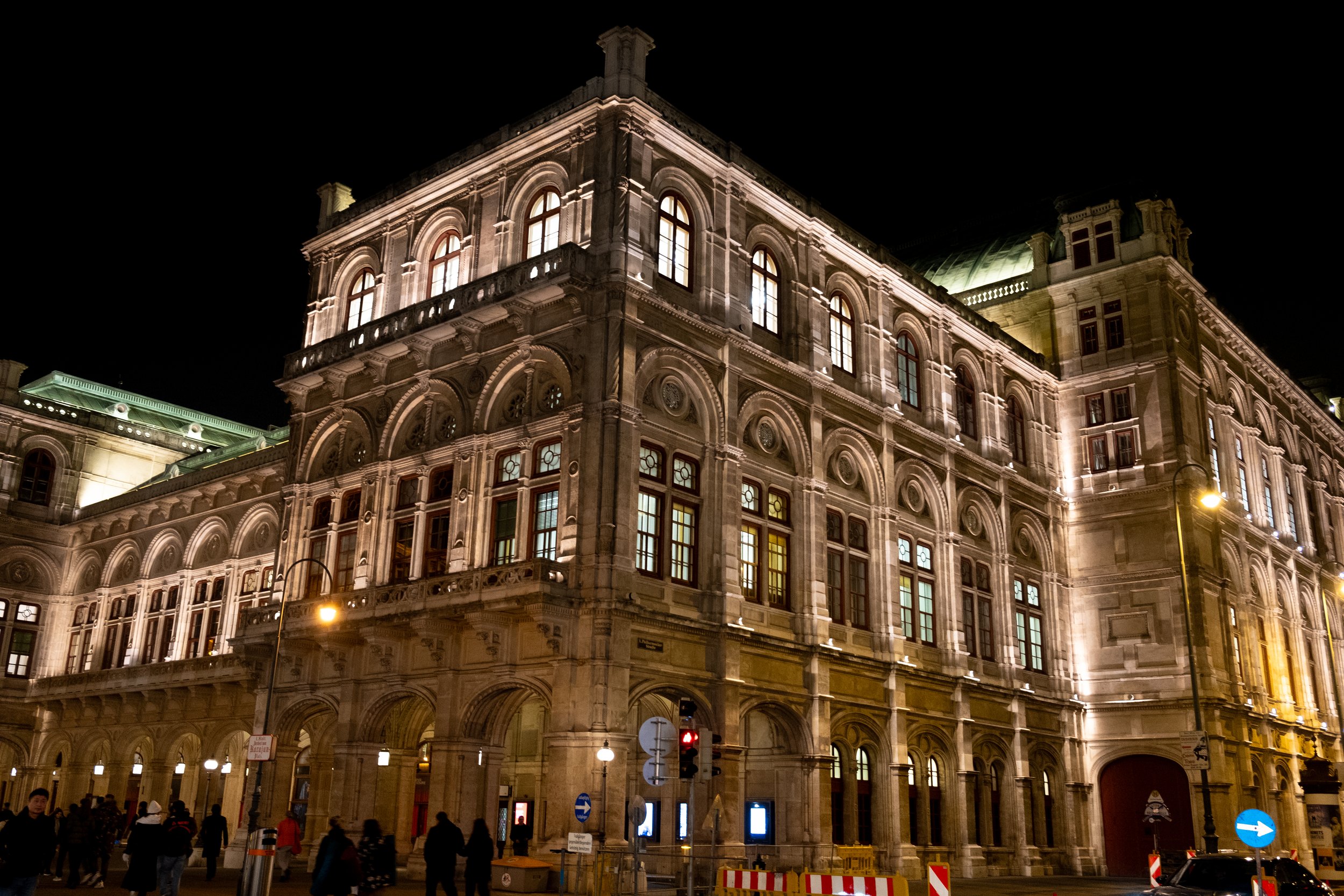Vienna
From Bratislava, Vienna is only about 45 minutes by train. I arrived in the afternoon, which in November 2022 was clear, brisk, and ruddy, sun sinking quickly over the imperial city. I stayed in the southern neighborhood of Favoriten, and once I had dropped by bag at the Airbnb, I made use of the waning daylight to go for a walk and form some sort of impression of this place I had imagined for so many years.
At first I found myself among crisp apartment blocks and modern parks, all the hallmarks of the kind of walkable communal spaces that I wish we would zone for (although my understanding is that Vienna is not above criticism and could in fact stand to have a higher density). Still, there is something specific and esoterically charming, at least for me, about certain kinds of foreign cities where children play in the public green spaces between concrete apartment towers. But of course, the foreignness is perhaps ancillary, a greener shade of grass.
Just north of the station, I found the first jewel of Vienna’s many-crowned imperial past, Schloss Belvedere, glowing with the fading warmth of day. Its garden mazes were picked threadbare by November, but they overlooked the most beautiful twilit city, St. Stephen’s spire like a lone sentinel over the fields of palaces and galleries.
Beyond the gardens was the beginning of Schwarzenbergplatz, where I could glimpse the active leisure of the evening begin. Here I found a reminder of Vienna’s strange position during the Cold War, balanced on the knife edge between empires – the monument erected to the Red Army, which arrived at the end of the war but did not stay so long. Nearby was the baroque wedding cake of Karskirche, lit up like a joyous candle in the blue gloaming.
The next morning I wended my way North, again past Karlskirche, the Ring Road, the Opera, and into the historical core of what had once been a walled town. There, at the center, stands Stephanskirche, built from the 13th through the early 16th centuries, it’s South Tower almost 450 feet high. The religious center of an empire ruled by the great stalwarts of Catholicism, the Habsburgs, the roof’s panoply of tiles bears their royal double-headed eagle, a symbol of empire that has existed since the Bronze Age. In the alleys nearby I found Mozart’s old apartment building and a wealth of other gorgeous architecture, including the heavenly St. Michael’s, which was in the midst of celebrating its 800th year.
From there I made my way into the Hofburg, the primary seat of the Emperors. I glimpsed one of the famous Lipizzaner horses in the Stallburg, and then made my way into a section of the Hofburg dedicated entirely to showcasing the unbelievable extent of the imperial tableware. Room after room after room of exquisite cutlery, painted plates, napkins folded in a manner passed down in secret by generations of palace staff, who now deploy them in service of Austrian state dinners, a table service which was a part of the peace treaty settlement with Napoleon, and gilded tureens. Above this was more palatial museum, showcasing the former imperial apartments and explicating the life of Empress Sisi, the much romanticized and troubled wife of the penultimate Emperor Franz Josef. On my way out, I passed doors with signs telling museum visitors that they were for staff – specifically Austrian presidential staff, because the President’s office and much of the core of the Austrian government is housed in other parts of the same connected buildings that compose the Hofburg.
As night fell I strolled past immense colonnades, the monuments of a shattered empire; a solemn Holocaust memorial; the beginnings of a Christmas market popping up around the Cathedral; and the Café Central, whose customers included everyone from Theodor Herzl, key founder of modern Zionism, to Adolf Hitler, and Sigmund Freud, Josip Tito, Stalin, and of course regulars Trotsky & Lenin, plotting revolution in exile.
The next day I explored a changed city, smothered under a blanket of cold fog that reached all the way to the ground. A local friend of a friend was kind enough to show me around the city, pointing out the ornate flowering of architectural decoration that began in the restive final years of the aging empire, or the gigantic flak tower built during the War to defend against air raids. A section of the Danube, the Donaukanal, was captured by the city’s engineers several centuries ago and regulated into a domesticated waterfront, more conveniently proximate than the main body of the river. From here boats leave, going back and forth to other ports up and down the river, like Bratislava.
The final morning I spent in Vienna was dreary and heavy with rain, but I had to go outside nevertheless to see great palace in the suburbs, Schloss Schonbrunn. The site of this on TV earlier in the year, when it was hosting its annual summer concert, had reminded me of my desire to see Vienna and in doing so prompted the timing of this entire trip. When I arrived, I found that the palace itself was merely the frontispiece of an immense work of landscaping which verged into naturalistic hills and woods, cut through with regular avenues of precisely-cut trees. I could not take pictures inside the palace, but I visited the mirrored great hall, a room sufficiently grand to host Napoleon when he occupied the city and forced the signing of a peace treaty with the Habsburgs, and also to accommodate the famous meeting of Kennedy and Krushchev in 1961. But the gardens made a stronger impression on me, because they allowed me silence to wander and feel the fatigue and quiescence that comes at the end of a long journey. The next sunrise I saw from the aircraft, on my way home. This is the end of my trip to Mitteleuropa.















































































